Guest post by Joni Gallo
We asked Joni to share her knowledge and understanding of cats with the Feline Leukemia Virus with us. Joni is a lifelong cat lover who has had several FeLV cats in recent years, without planning to. She has learned about the condition and about living with and caring for cats who carry the virus. Despite well-meaning recommendations and advice encouraging her to euthanize her cats upon diagnosis, Joni chose to let them live and give them the love and care they deserved. She has a mission now, to encourage others to give FeLV kitties a chance at life and happiness.
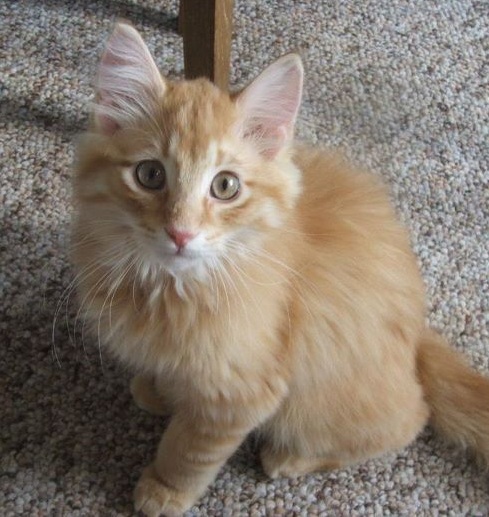
As I hung up the phone, I began to cry. The vet had just told me that the new kitten I’d brought home had tested positive for the feline leukemia virus. She told me I shouldn’t keep him. I had five other cats. I was torn. Little 3 month old Sienna had been found in an abandoned house with his mother and had nowhere else to go. He would have been “euthanized” at a kill shelter. He would have been spared at a no-kill shelter but would most likely never get adopted. I couldn’t give him to anyone. No one would want him.
Fortunately, as it turned out, I did keep Sienna because I found out a month later, that he was not the only cat I had that carried the feline leukemia virus.
What is the Feline Leukemia virus and why is it so feared? FeLV is a retrovirus that only infects cats. The virus spreads by inserting copies of its own genetic material into the host cat’s cells. The cells are then transformed into cancer cells or cells which do not function the way that they should. (greenbriervet.com)
FeLV is passed along from cat to cat through bodily fluids and requires repeat exposure such as that which occurs in cats sharing a household or living together in the same room at a shelter. Mutual grooming, sneezing, the sharing of dishes and litter pans can all spread the virus. FeLV is sometimes confused with FIV, which is more like human HIV. With FIV, white blood cells called T helper cells are destroyed, leading to a depression of the cat’s immune system. FIV is mostly spread through bite wounds and so is more common in unneutered males. (winnfelinehealth.org)
When a cat tests positive for feline leukemia and has been exposed to other cats, all the cats should be tested immediately. I made the mistake of only having one other cat tested, Colt, the one that had spent the most time with Sienna. When his test turned up negative, I stopped there. A little over a month later, it was discovered that my two girls, Dharma and Karma, both carried the virus.
Retests are important with FeLV. The test that is performed at the vet’s office is called the ELISA test. This test checks for the presence of a protein component of the virus as it circulates in the bloodstream. (vet.cornell.edu) Since it is possible for the cat to produce an immune response that sheds the virus, another ELISA test should be done a few weeks later. There is also a second test called the IFA test which is sent out to a diagnostic laboratory. This test can be used to confirm the cat’s FeLV status.
40% of the cats exposed to FeLV will successfully shed the virus from their systems. (greenbriervet.com) This occurrence is more common with an adult cat, then it is for a kitten. If the virus is not shed, there are two other outcomes. 30% of the time, the cat will become persistently infected. In this case, both the ELISA test and IFA test will be positive for feline leukemia and remain positive for the cat’s whole life. Cats that are infected will typically remain healthy two to three years after exposure and then eventually succumb to a FeLV-related disease such as lymphoma, leukemia, or an untreatable infection. 15% of FeLV+ cats do, however, make it past the four year mark.
In the second outcome, 30% of cats exposed to FeLV will become latent carriers of the virus. When the virus moves into the cat’s bone marrow, it becomes undetectable in tests. At a later date, the cat will either shed the virus or become persistently infected. (greenbriervet.com) This last scenario is how a cat that was previously negative can become positive even without new exposure to the virus. Most likely, my cats, Dharma and Karma, were latent carriers. Sienna, being so tiny, was unlikely to spread the virus to adult cats and although there is a small chance that Dharma and Karma passed the virus to Sienna, it’s more likely he got the virus from his mother. (Sienna’s mother was taken into another home and had not been tested the last I heard.)
When you have a household of both feline leukemia negative and positive cats as I do, you can do two things. First, you can keep the cats separated. In other words, the positive cats can be kept in one room or on a separate floor to prevent exposing the negative cats to the virus. This is the safest option. Second, you can have the cats that tested negative vaccinated against feline leukemia. This is what I opted to do and it has, so far, been successful. Those cats that are negative stayed negative. The vaccine is not considered 100% effective but it can work by creating an immune response to the virus that will protect the exposed cats.
Some vets will suggest euthanizing a cat that carries FeLV, though not all vets do. If you opt to euthanize, you must realize that you are destroying a cat that only has the potential to be ill but is not necessarily currently ill or in any distress. Doing this is not giving the cat’s immune system the chance to possibly shed the virus. Also, if you euthanize, you will never know if the cat could have been one of the 15% that may have lived a long, healthy life.
There are people who believe that euthanizing cats that are positive for FeLV is helping to prevent an epidemic against the whole feline population. This is incorrect. An epidemic of feline leukemia would only be likely to happen in a hoarding situation. Cats that live outside (even in feral colonies) do not live in close enough proximity to each other to spread the virus. For instance, it is estimated that only 2-3% of cats in the United States carry the virus at any given time. (vet.cornell.edu)
If you decide to keep your FeLV+ cat, know that you are doing a very noble thing. You are giving a chance to a cat that doesn’t have much of a chance. Although the cat’s lifespan may be shorter than that of a normal cat, that life can be filled with happiness for both you and the cat. Good care is important. Feed the cat a high quality diet and try to find a vet who is knowledgeable about the feline leukemia virus, which you would be more likely to find in a “cat’s only” practice.
FeLV+ cats should always be kept indoors for their own safety and for the safety of any strays that may wander onto your property. Due to their weakened immune system, it is important to treat an infection in a FeLV+ cat immediately with antibiotics. Eye and gum diseases can be especially common and should be watched for. An immune booster such as interferon is sometimes given which can help protect against the growth of tumors. In a controlled research study (Weiss et al. 1991) found that feline leukemia positive cats that were given interferon had a 75 percent reduction in symptoms. (aboutcatsonline.com)
Sadly, the story with my cats that carried FeLV did not end well. Sienna was euthanized at 6 months old after developing spinal lymphoma. Dharma and Karma were healthy for about 3 years after testing positive for the virus, they both then succumbed to a mixture of cancer and bacterial infections. Colt, unfortunately, tested positive for the virus before he could be vaccinated. He is coming up on the three year mark but is so far still healthy. He now has an FeLV+ companion, Gabriel.
Although it was hard watching Sienna, Karma, and Dharma go, and it is sad that their time with me was cut so short, I could not imagine having lived without them. Their joyful, loving spirits endured until the end and I’m glad that I gave them the chance to live out their lives.
Cats with the feline leukemia virus face a tough struggle. They do not need the added burden of people’s ignorance and fear. If you ever find yourself in my situation, please do what I did and get all the facts before making a decision. That way at least you know, that whatever decision you make, you have thought it through and did not just cave into the hysteria that usually accompanies any discussion involving the feline leukemia virus. These cats deserve no less than our full consideration and respect.
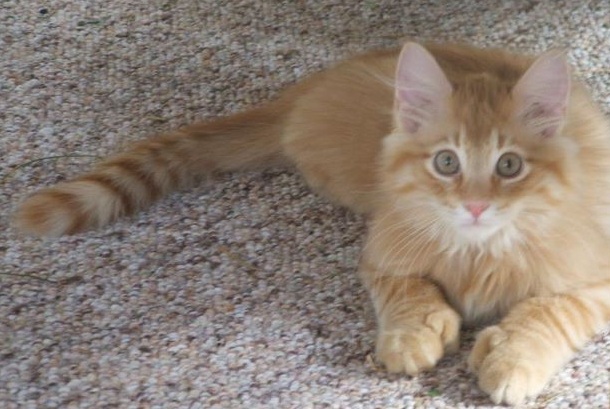
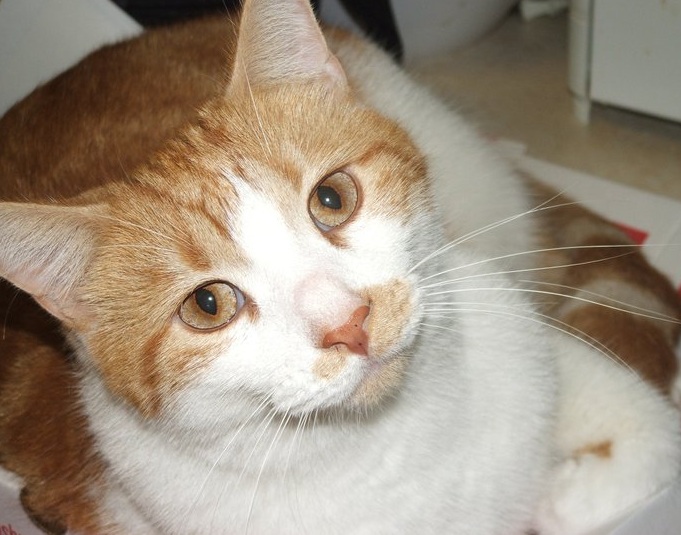
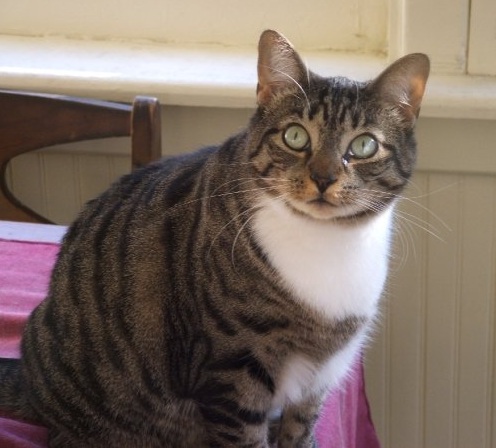
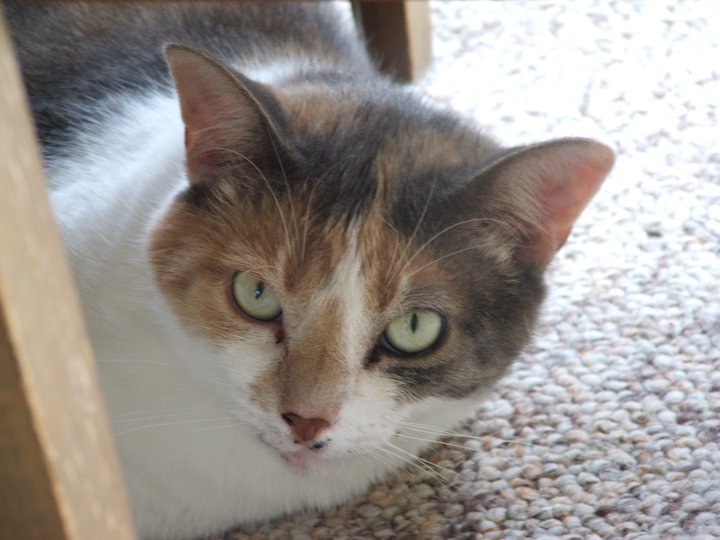
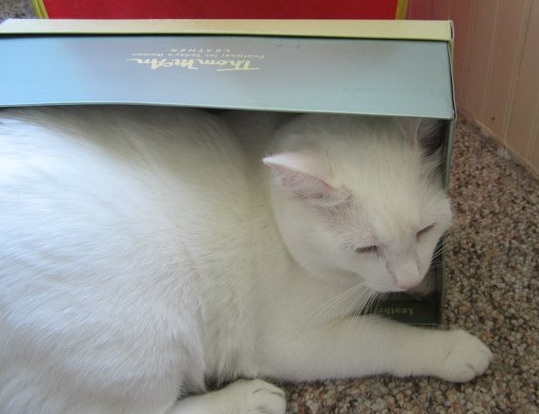
All such precious babies. Sienna’s paws so adorable. I know you miss them all, but they were so lucky to have found you! Best of health to darlings Colt and Gabriel.
Joni thank you for such a great informative article…..I love your furbabies!!!
Thank you all for sharing your stories. I’ve been combing the Internet for the past few days looking for information and first-hand stories. The other night, my husband and I rushed our 14-year-old cat to the emergency room–she collapsed from weakness that we found out was caused by anemia. After testing, we were shocked to learn that she was FeLV positive–she tested negative as a kitten and was vaccinated for the virus. Apparently, she has been latent all these years and only just now has shed the virus with complications. After a few blood transfusions, she is stable, and the vets cannot find any other secondary infections that may have caused the anemia. So we’re hoping that they can prescribe a treatment that will help. We were given the option to euthanize her–not because of her positive status, but because of the potential costs involved in diagnosis and treatment. We’re hoping for the best.
But we have five other cats in our home, so now everyone must be tested. I’m so afraid for the others, but after reading your stories, I feel more hopeful. All my cats get along well, so I would hate to separate them and if they can potentially live together via vaccination and treatment, then that’s what we’ll do.
Sorry to hear about Mick’s illness. One thing I’ve learned from nursing cats with chronic illness is that even vets sometimes do not sort out what issue arises from what cause. For example, one could have an underlying cause that leads to Chronic Renal Failure (CRF), in turn expressing as a variety of symptoms. There are things that can be done to support a CRF kitty, even when the original insult cannot be undone. Blessings for Mick and you in the days ahead. And Joni is right. Those tough road kitties have become very close relationships, cherished even years later.
Thank you for this. I just found out that my 7 year old cat has been FeLV positive for the 4 years that I’ve had and loved him. He came from a hoarding situation of about 40 cats so naturally I had him tested before introducing him to my others. I never would have thought he was sick the whole time, but he’s indoor only and has never left my house. I kept having him tested for parasites and ear mites due to his drooling and his diarrhea. This was NEVER on my radar. My vet thought he had a diaphragmatic hernia the other day when he could hardly breathe. When he opened him up to repair it he found lymph fluid in his lungs and abscesses throughout.
I have been kicking myself for the last day (I found out yesterday) that I inadvertently may have spread this to my other cat. I went in today and the vet had a syringe ready to euthanize, but as soon as I started petting him he began purring. My vet says you don’t put a happy animal down. I agree! While I’m completely heartbroken I’m happy to see that your animals made it so long. I haven’t had my other cat tested, but I plan to soon.
Thanks again.
Hi! Reading your story about your cats. So sorry to hear. What was the final outcome with all the others?
Have you tried interferon for Mick? Not sure he is still with us.. as this is an older posting.. but wanted to ask, as i have had so far great success with my cat PUMA who is FELV positive.
Try the new LTCI treatment for cat. On the net. Interferon did not work on my cat.
People these little babies need us. I just buried my Kiki,2 yrs. Felv. Vet said to put down 2 yrs. ago. Hell No. there is still plenty of love left in these cats. if you are a real cat person, you will try to keep them alive as long as possible.
I bought interferon from my vet it was $40 for a three month supply.
Courtney
I have a very similar story-My cat Patrick was an orange tabby, who was a real rascal and a great cat. When we got him he also had an eye infection and an upper respiratory infection. He also had chronic constipation problems, but with all that was the happiest guy I have ever known. He tested negative for FeLV as a kitten and we thought he was on the road to recovery. when he was 2 he got a terrible eye infection, which led to corneal ulcerations. He was a trooper and made it through the eye surgery, but a month after he had a few seizures. I took him to vet and blood tests confirmed he was FeLV positive. I was stunned. Poor Patrick remained happy but he dropped weight fast and he only made it 3 more months to the age of 2 1/2 and we had to put him down, and he purred to the end. He was a true survivor. He was found in the engine of a car, and was born with 3 paws and a back stump, which never slowed him down. Your story reminded me a lot of my friend Patrick who is gone now 2 weeks, but I am very grateful of my time spent with him, he definitely changed my life forever.
Absolutely great article! Thank you and keep putting this information out there! I will do the same. I recently had the same situation happen to me. And it didn’t end well nor did it end the way I wanted it to. I plan to let more people know about this because it is more serious than people know, inclusive of myself.
A male semi-feral tabby cat adopted us by living on our front porch in the winter time. We named him PK, for Porch Kitty. One day he was very sick, so I took him to the vet and they said he had a rhino virus. I also found out he was FeLV+. This was confirmed with a positive IFA test in November 2011. Two 1/2 years later, PK is a full-fledged member of our household and still exhibiting his normal energy and behavior. However, I worry about him and watch him like a hawk, because I absolutely dread the day he is diagnosed with lymphoma. His blood panels are ok, but not great. His hematocrit is low — his vet thinks because he has fleas that could be causing anemia. We are currently treating him with a low-dose flea collar and waiting on test results for possible bartonella infection. We also just started him on Interferon to boost his immune level, at the suggestion of our vet. I am not ready to lose my Peaky. I sincerely hope he turns out to be one of the 15% that survive with this virus for many years.
Thank you for sharing your story. My boyfriend and I rescued a little 3 month old kitten (about 4 mths ago) who was on the brink of dying. He had dried up snot COVERING his entire face & ended up testing positive for Felv. We weren’t giving up on him though! We had him re-tested just the other day (4 months after the initial testing) but he still had it. We did what you mentioned & actually brought him to a feline only cat practice and I’m so glad we did. The vet informed us that since he was running a slight fever & had enlarged lymph nodes (common signs in a felv+) it was in his best interest to hold off on his vaccines & neutering as of right now & sent us home with antibiotics. We are waiting to see if they help rid his body of these early signs. We have had him in a separate room (basically a king’s suite) because we do have 5 negative cats of our own. We were scared at first of having the virus transmitted, but after reading hundreds of articles I am comforted in knowing that direct contact is the only true way of transmission. I know both vets were inclining that we euthanize, but my boyfriend & I were not putting down a cat that still has life to live. We named him Rain, because I grabbed him while it was raining back in March. We love him so much & he has the sweetest personality. We are prepared & happy to give him a home for however long he has left to live. Your story was very touching & I’m so glad there are people out there who also believe that every life matters.
Best wishes for you & all of your kitties,
Stephanie
Wow……I thought I was the only one….
Last June, the very end of a very hot June, we kept hearing a desperate kitten crying but when we would go to find it ..nothing. So I thought it was one of the feral cats kittens but after almost 2 days I could hear it weakening and knew it needed help.
I was able to trap it almost immediately, it was so tiny and so hungry and a spitball of fire. I fell in love with her. I have 7 other adult cats and she was named BK (Baby Kitty) for the last five months she has tortured all of them. Leaping out at them, attacking their tails, trying desperately to get them to play. She sleeps right next to me and stretches her little arms over head as though she’s trying to hug me.
Well my other cats are all indoor/outdoor and come and go as they please and BK who is an amazing little energy ball, was starting to follow them out so I made an appt at the vet for her shots and spaying, I also noticed her not opening her right eye all the way.
While we were there I asked why she was so thin and told him about her funky breath and the weird little bumps under her skin on her neck. He said they had to test her first before she got her shots but gave me some meds for her skin. Two days later they called and told me she tested positive for FeLV and advised euthanasia…. I was stunned, what are you talking about….NEVER! She is fine we just came in to get her her shots
That was ONE week ago and now my precious baby kitty barely moves, her eyes are swollen, she eats very little and sleeps. She doesn’t bother the other cats anymore, she doesn’t play at all. She just crouches and dozes and moves to a new spot in the room. She is even running away from me because of having to give her meds. She is not even six months old yet. I guess the low weight, sour breath, skin lesions, her eye together spell out FeLV . I don’t understand why she is so sick so quickly. We had to have all the other cats tested which are all neg. I am beside myself and don’t know what to do. I want her back. Today she stopped purring. I’m not giving up on her.
Did you look into Omega Interferon from Europe? It has to be imported and it can be expensive. There are people who say it worked for their cat. I am also going to enquire about “Ozone Therapy” it supposedly cured several cats with FeLV as well.
My cat Sammy was diagnosed with Feline leukemia as a kitten. He began to lose weight a month or so ago but we thought he was just getting older (13 years) and did not show any sign of illness. We came home from outing yesterday, he was gasping for air. Rushed him to vet but he died in transit. He had a good long loving life…much more time than we could have hoped for. They can live a long life if given a chance.
Ann
You may have already seen my post below about using Winstrol (Stanozolol) but if not, I would do that for your cat. Winstrol is very good in getting the bone marrow to turn back on again and to produce red cells, and that will help with the low haematocrit. It will also help with his energy levels and his appetite. The Interferon is quite expensive, and at least for us, it did absolutely nothing as we were closely monitoring our little boy’s blood work on a weekly basis. The Winstrol, on the other hand, is not particularly expensive (although many vets don’t know it and therefore some may not know where to source it). Just my 2 cents’ worth.
My Oreo is FELV. He was negative at 8 weeks old but turned positive at 31 weeks. Actually he is 9 years old. He has been sick 2 times when he was a kitten, fever and runny nose. The vet gave him shots of immunoglobulin and I supported his meals with 4 transfer, and so far he is ok.
Forgot to add, Winstrol (Stanozolol) is
available only thru compounding pharmacies now.
Thank you so much for such an inspirational post. I’ve just had my two cats test positive, one is very sick and just had a transfusion and the other, her brother, seemingly very healthy. I’m devastated. Would love any advice or help you can give me
Thank you for your post, Lisa. I don’t see another one from you so I am crossing my fingers that you got some improvement in the blood results. Definitely, my experience is that my cats all perk up dramatically on the Winstrol, and they eat and play and put on weight. For that alone, the medication is worth its weight in gold.
Hi Brockovitch, Salem improved throughout Sept. 2015, so ( I am STILL kicking myself…) I decided to back him off the Winstrol to one a day. Then in late Sept, he crashed on me, I immediately restarted Winstrol twice a day..
Wasn’t enough, I lost him on the morning of Oct. 7th.
The cruelest part was that he improved so well and quickly the first time, and I second guess myself about reducing the amt. of Winstrol. I really miss him, he had his quirks but that was just him…
Thanks again for providing the info, I have it available to me if I need it again…
Lisa
Lisa
I am so sorry to hear about Salem. It is heart breaking. Thank you for your kindness in posting to tell us about your experience with Winstrol, despite the sad outcome for you. I really think this is a good option with leukemia, and as I mentioned in my earlier post, I have used it with good effect in several other critical situations with different cats – almost always with an excellent outcome.
I’m so sorry your experience wasn’t more positive. I agree with you that I think it is probably essential to keep a very sick cat on the Winstrol long term, until the lab results return with good results several times.
I had a cat for five years that my husband in quite literal sense risked his life to save who ended up being FeLV positive. We didn’t know about it and one day she got really sick. We immediately took her to ER vet when he got home. She was too far gone so she had to be euthanized. I miss her, but I would rather her cross the rainbow bridge than be in pain.
Lisa,
I am emailing back and forth with another cat lover who is trying hard to bring her FeLV cat back from the brink. She lives in Wisconsin but managed to find a compounding pharmacy all the way down in Arizona (Diamond Back Pet Pharmacy), which will provide Winstrol with a vet prescription (but I think the vet has to order it online), and will mail out the meds. However, they don’t have it in the tiny white tablets I am used to using. They have it in liquid form and chewable tablets.
I wondered where your vet got your Winstrol? There is another person in New York trying to get Winstrol for her cat, and her vet told her it is not available in the U.S. Obviously, this is incorrect, but is not surprising given how little attention the vets give to this medication.
Can you help out by posting information about the source of your Winstrol?
Thanks.
My source with my vet’s Rx is thru a local compounding pharmacy that my vet uses.
They put it in capsules for me.
Tiny ones that are
easy to pill. My suggestion is for them to look for a local human comp. pharmacy. Thats what ours is, they do not mail order though. They are very helpful, Good luck to the 2 kitties you are helping out.
Forgot to add…I am in Indiana. I
am sure there must be human comp. pharm’s that could help them out. Have to ask for Stanozolol though…they don’t recognise the veterinary form Winstrol.
Thank you for your article! We adopted two kitties, a senior Bailey and a young adult Zelda, from a rescue in December. The rescue tests them for FeLV and FIV, both were negative. We found out this week our littlest Zelda is actually positive for FeLV. She had been in the hospital since Monday with a fever and respiratory infection, which today is finally back to normal. Anyway, after doing my research, my vet and I had the discussion on what was best for her. I have a good vet that is in his words ‘optimistic’. We tested Bailey and she was neg so she got vaccinated immediately. Zelda’s immune system was not on either end of extreme and was functioning. Plus she is tough! At only 7.5 pounds she is a pistol. Neither of us were ready or willing to give up yet. She is home eating and recovering and I am very thankful.
I am sorry for your loss. It was hard for me to read yesterday the statistics on life expectancy, however as you said I cannot imagine not having their joyous presence and yes their lives do deserve respect. Zelda and Bailey have only been in our lives for 5 months and it has been a rough go so far already, but I do not regret for a single second the decision to bring them home. They make me laugh every single day!
Thank you again for your kind words, they truly helped when needed.
I’ve read all of the comments, too. What happened with Quinnie?
Hi everyone, I found a kitten who was in a ditch May 27, 2016. I cleaned him up and took him home. I have two other cats. We went to the vet and had shots and boosters. I told the vet how the kitten came to be mine. Nothing was said about feline leukemia. I noticed after four months he would walk a short distance and sit down. Appetite and fluid intake was still good. Back to the vet and he was treated for tape worms. Well on October 12th he started to have loose stool, and his coat changed. I went to the vet again. He was tested for leukemia and came back a strong positive. His temp was 105. The vet said he would not get better. I stayed with him as he was put to sleep. My heart is broken and I miss him so much. He was my little buddy. I had no idea something so horrible could happen! My other cats are a female and male they have had vaccinations, but will that help them?
Hi.I read this article with tears streaming down my eyes that i can hardly type….My 3 year old cat was diagnosed with both felv and fiv. The most healthiest cat in my household and the baby of them all. The vet looked at me and said the wisest thing to do was to euthanase considering that I have 2 more cats at home. I chose to bring nugget home so that I could care and love and nurture him and so that he could live his life until he decides its time. I didn’t want that to be my decision. It has now been little over a month and I can see the changes in him. He has his on and off days. There are days where I have to carry him to his litter box, hand feed him and then there are days where he runs around the house being chirpy. I have made huge adjustments at home to make it comfortable for him and have separated the other cats as far as I can but its been challenging. I read many articles and researched on my own as to how to care for him and although its hard at times, I learn each step of the way. Some days I sit and just cry my heart out and then there are days that I thank him for being so strong and fighting this. I will do whatever it takes to make his life little bit easier and comfortable and for as long as he wants to be around…I love him to bits!
I wish i would of found this a few days ago. My cat suddenly fell very ill. He had fluid in his chest and stopped eating. I tried to help him but it was to no avail i didnt want him to suffer anymore. The glow in his eyes were gone. He was isolating himself from us and he was the most affectionate cat. He tested positive for felv. I wish i would have been able to try winstrol.
I have heard belfield mega C plus has been successful in reversing feline leukemia. I have five other cats as well and am very worried they could get the virus as well.
R.I.P Smokey <3 Love you!!!
Best of luck to all of you and keep up the good fight.
Sounds to me like even though he was FeLV positive, he probably died from FIP, another retrovirus. FeLV doesn’t present with fluid in the chest.
PS – I forgot to mention that if you find out that your cat has FeLV, please be sure to find a 24hr emergency vet in your area because your cat will get to it’s worse point when your usual vet is closed and they aren’t happy to have to come in even if you have been a regulars for say 20 years. There are people who wanted to let their cats “die peacefully at home.” And their is no peaceful death for FeLV. Their stomachs swell so big and they go into seizures that may not stop until they are dead. It’s a horrible, painful death and the kindest thing is to have them put down.
Actually, it’s just wise to find a 24hr emergency care vet regardless.
Can I ask when you had your cats vaccinated with the felv vaccine did you let them play with the other infected one or did you keep them in separate rooms
Wow, I didn’t know FeLV was so uncommon! Only 2-3% of all U.S. cats carry it?
My mom feeds a feral (some slightly tame) colony & they’re all constantly falling ill with respiratory infections & other stuff. Some of it is due to worms but what other things can cause repeated, lifelong respiratory infections that must be treated with round after round of antibiotics? (Not counting FIV, as that’s mostly a problem with fighting/biting toms which most of our cats aren’t). Do feral cats normally get and stay sick most of their lives in the absence of FeLV? Or is this entire colony of 15+ cats infected? We also have kittens that waste away for no apparent reason regularly.
Genuinely curious, as these kitties are impossible to catch & the closest vet is 45 minutes away. We live in the middle of nowhere. Having them tested–let alone treated–is nearly impossible except for the few tame ones which we give shots & meds as often as possible.